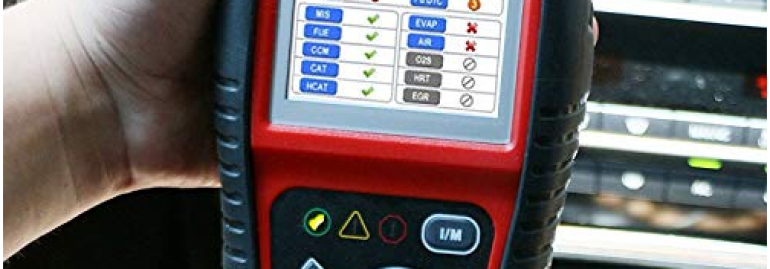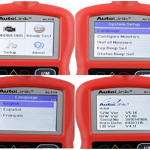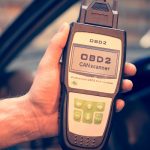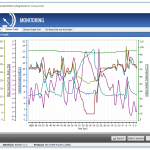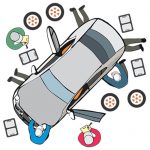If you have ever wondered how to read car trouble codes, then an OBD-II or an EBD-Code reader can be a great tool to have around the house. These devices read the codes on a car’s on-board computer and can help you to identify various problems with your car. They can also be carried around easily and are useful for diagnostics. In this article, we’ll take a look at the various uses of OBD code readers.
OBD-II is a diagnostic system
An OBD-II diagnostic system is an electronic device in a vehicle that provides information on the state of various systems and components. These systems make a data stream available through a standardized data link connector. These data streams include speed, torque, and EGR system parameters, as well as fault codes and other important parameters. A malfunction in one of these systems will illuminate a warning light on the instrument panel. This warning light will show a specific message, usually the words “Check Engine” or “Service Engine Soon.” Once a malfunction is detected, this system stores information that can help the owner identify the problem.
The OBD-II standards were first adopted by the California Air Resources Board (CARB) in 1994. In 2010, the mandate was expanded to include specific non-passenger vehicles. The International Standardization Organization (ISO) and the Society of Automotive Engineers (SAE) issued standards to facilitate the digital exchange of information. Currently, 33 states require drivers to have their cars inspected regularly, and OBD-II systems are a vital part of the inspection process.
Initially, OBD-II systems were found in Buick Regal 3800 V6, Lexus ES3000, and Toyota Camry. This system was also used for Pay-As-You-Drive insurance and vehicle telematics devices. However, it is not mandatory for manufacturers to implement this diagnostic system. They may include proprietary PIDs in their vehicles. There are numerous benefits to OBD-II.
OBD-II was first introduced in model year 1994 vehicles. It was made mandatory in 1996. Fortunately, aftermarket parts manufacturers continued to produce replacement parts for the majority of vehicles. The aftermarket parts must be compatible with the OBD-II system. CARB exemptions are also required for performance-enhancing parts. Most performance-enhancing parts can also be installed with OBD-II systems.
It’s a port for connecting to a car’s on-board computer
An OBD port is a special port on a car that allows a diagnostic computer to connect to the car’s on-board computer to read Diagnostic Trouble Codes (DTCs). Although the port isn’t always accessible, it is a relatively small, easy-to-use port that provides constant 12-volt power and a connection to the on-board computer system.
All cars have built-in computers that keep track of a variety of functions, including engine performance. The on-board computer, or ECU, communicates with other systems in the car through a network of wires and software protocols. When a driver pushes a button on the steering wheel, a sensor reports this information to the body control module, which then energizes the motors and monitors voltage.
A car’s OBD port is a critical component of many modern vehicles. A 16-pin connector on the steering column is called the OBD port. This port connects to the vehicle’s computer network. It’s like the USB port of your car, but much easier to install. Using a specialized adapter or cable can be very dangerous, because it can short out the port and damage the vehicle’s electrical system.
A CAN to USB adapter can connect to the CAN bus to connect to a car’s on-board computers. In addition to being convenient for connecting to the car’s on-board computer, a CAN connector can also be used to troubleshoot malfunctions. For example, a car’s RPMs can change if it’s running in accessory mode, so the information transmitted from a malfunctioning ECU will be lost.
It can read codes
An OBD-II or EOB-DII code reader is a necessary part of every car owner’s toolkit. These devices read and clear car error codes and give you valuable information about your vehicle’s health. While you may not need a full-fledged diagnostic reader for an ABS light, a basic one can save you a lot of headaches.
The Foxwell NT201 CAN OBD-II/EOBD code reader is a good choice for entry-level professionals and savvy DIY-ers. The NT201 has a 2.4″ color screen, hot keys for I/M readiness test, and DTC reading. You can purchase an OBD-II code reader from Amazon for as little as $19.99.
Depending on the model, there are a range of functions that OBD-II scanners can offer. The more expensive ones include more functions and more features, while the inexpensive ones can perform only the basic diagnostic functions. The ThinkOBD 100 is an entry-level OBD-II scanner, so it won’t offer advanced diagnostic functions. Moreover, the scanner comes with a lifetime software update, so you won’t have to worry about losing vital data.
A good OBD-II code reader should be able to read all codes from an OBD-II port. This is a quick and easy installation process, and doesn’t require any special tools. The device is also compatible with most vehicles, including those that don’t have an OBD-II port. There are also a range of other features available with a code reader, which makes it worth the investment.
OBD-II or OBD stands for on-board diagnostics, which refer to the computerized system inside cars. The On-Board Diagnostics (OBD) system monitors the computer system of a car and reports malfunctions as a series of diagnostic trouble codes. OBD-II code readers can read these codes, making them vital tools for auto repair.
It’s a portable tool
EOBD or On-Board Diagnostic (OBD) codes are messages that your car sends to the computer when something is wrong with it. You can use an OBD code reader to identify the issue, and a portable version is easy to use. These devices can be used anywhere you need to connect to a car’s computer, including in the car.
OBD-II port scanners can also help you locate your vehicle with GPS technology. Using a portable OBD reader will allow you to check the OBD codes on your car and get a detailed breakdown of the problems. Many port scanners even include location tracking features, which means you can locate your car from wherever you are. Other features include tuning your vehicle and getting better fuel economy.
The ThinkOBD 100 is an excellent OBD-II scanner that allows you to diagnose your vehicle. It can clear the MIL Fault Indicator Light and other fault codes. You can even perform an on-board inspection readiness test. It can also check the engine’s fuel system and reset the Tire Pressure Monitoring System (TPMS).
If you’re a newbie to auto repair, you can start with a consumer-priced OBD-II code reader and learn the basics of diagnostic. Despite the relatively low price of consumer-grade scanners, the best ones offer advanced diagnostic functions. However, if you don’t have a lot of money to spend, you can go for the expensive pro-grade models. The MaxiDiag MD808 OBD-II scanner does not have all of these features. Nevertheless, it’s still affordable for auto hobbyists and has a lifetime guarantee.
The CarScan Pro is another popular OBD-II code reader that delivers pro-grade functionality at a reasonable price. With its multi-functionality, it works on most cars manufactured after 1996. The CarScan Pro deciphers virtually every diagnostic trouble code and individual control module. The CarScan Pro also has a simulated smog test function. The CarScan Pro can even monitor the battery and show live data.
It’s easy to use
If you’re new to the field of car diagnostics, an easy-to-use OBDII and EOBD code reader is an excellent purchase. These devices can read and clear engine fault codes, and some are even Bluetooth-enabled. They usually connect to the vehicle’s OBD2 port under the dash or near the steering column. While a basic code reader can only display alphanumeric codes, more advanced models will also give you a clear meaning of the codes.
The MotoPower OBD2 code reader has a built-in DTC lookup library and can read and clear codes and freeze frames. The AutoLink supports seven languages, is plug-and-play, and is compatible with most post-1996 OBD2 protocol vehicles. It has a patented one-click I/M readiness key and comes with a 12-month warranty and lifetime free updates.
This device comes with a user-friendly interface and works with most cars made between 1996 and 2000. It uses the power source from the car’s port and comes with a 2.5-foot cable. It is easy to use for the first-time user and is priced at $35. The Ancel Classic Enhanced Universal OBD code reader is an excellent choice if you don’t have a mechanic’s shop on hand or don’t want to spend hours learning the ins and outs of OBD-II and EOBD codes.
For the average consumer, an OBD scanner from one of the world’s largest auto suppliers is a great choice. Designed to work with all types of OBD2 vehicles, this device also allows you to troubleshoot ABS lights. It also has a one-year warranty. However, a simple scan tool will last longer than the most expensive models. You can even get free lifetime updates on your scanner.


